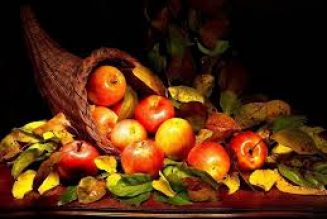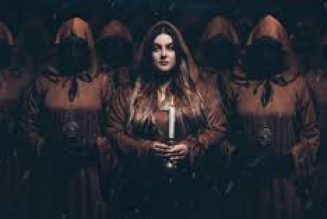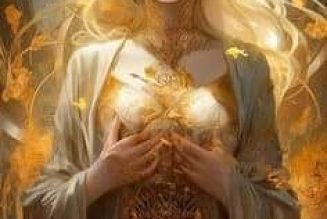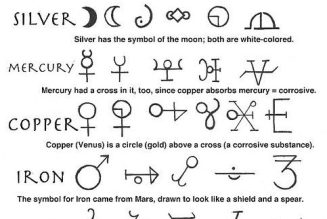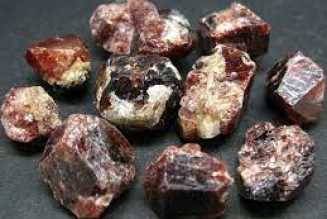The Appalachian Granny Magic Tradition of Witchcraft is one that is only recently being heard of.
Though the tradition is a very old one, dating all the way back to the first settlers of the magical Appalachian Mountains who came over from Scotland and Ireland in the 1700’s.
They brought along their even older Irish and Scottish Magical Traditions with them.
Those two ‘old world’ Traditions were then blended with a dash of the local tradition of the Tsalagi (Now, called the Cherokee Indians.)
The recipe for the Appalachian Granny Magic Tradition was then complete, though this potion simmered on a low boil for many generations before anyone dubbed it with the name, ‘Appalachian Granny Magic.’
The Witches of the Appalachian Mountains called themselves ‘Water Witches’ and/or ‘Witch Doctors’ depending upon whether they were personally more gifted in healing, midwifery and such realms of magic, or if they were more in tune with dowsing for water, ley lines, energy vortexes and the making of charms and potions.
Often a Practitioner called themselves by both titles if they were so diverse in their Magical practices.
The Appalachian Granny Magic Tradition, like many of the older ones, was passed on from parents to their children for many generations, and generally was not ‘taught’ outside of the individual family structures.
Because of the rural and secluded nature of the Appalachian community, the old customs, wisdom, and practices were not as often lost, forgotten, or ‘modernized’ as the ‘old world’ traditions that came over to other, more urban areas of the ‘new world.’
Therefore, one will often find that ancient Irish or Scottish songs, rhymes, dances, recipes, crafts, and ‘The Craft,’ are more accurately preserved in Appalachia than even in Ireland or Scotland.
Many of these old Scot/Irish traditions, as well as the Tsalagi traditions, both magical and mundane, were carried on in Appalachia until modern times.
Some songs, spells, and such have been passed down for many years that way, though sadly, sometimes only by rote, with the original meanings beings lost in the shifting sands of time.
In the secluded mountains of Kentucky, Tennessee, Georgia, the Virginias and the Carolinas, this denomination of the ancient religion of Witchcraft continued right on through the decades of the eighteenth, nineteenth, and the early twentieth centuries; a time when Witchcraft elsewhere was being nearly forgotten and abandoned by the increasingly modern and monotheistic world.
The people of the mountains still relied upon Mother Nature in a way, that ‘city folk’ did not anymore.
The fertility of the crops, the livestock, and of the people themselves was as paramount to the Appalachians of 1900 as it was to the early American colonists in the 1600’s.
Therefore, fertility, and the worship of Mother Nature, Jack frost, Father Winter, Chloe, Spider Grandmother, Demeter, and such varied deities continued in the Appalachian region, staying a current part of the people’s faith, rather than becoming a mythic memory as such ‘nature worship’ did elsewhere.
In fact, we still see “Lady Plenty and Lady Liberty” Goddess of the harvest, with cornucopia in hand, and Goddess of freedom, on the official North Carolina State seal.
Amazingly, even the terms “Witch””, “Witchcraft”, “spells”, “charms” and such never became taboo in the modern Appalachian culture.
Nearly every mountain top and ‘holler’ community had their local ‘Witch’ who was openly called such, as a title of honor, not as an insult or a charge of crime, as the term came to be used in other more urban American cultures of the seventeen, eighteen and nineteen hundreds.
The “Witch Doctors” were still called upon to heal a sick child, or deliver a baby, or tend to the dying, as Witches had been so charged with doing in Europe during ancient times.
Since often a mountain community had no medical doctor to call upon, the local Witches continued to work as the only healers, well up until the early twentieth century.
The local ‘Witch’ was also called upon to dowse for water, ley lines, and energy vortexes when one was digging a well, planting a new garden, burying a loved one, or doing any other work with the Earth. Thereby, the term ‘Water Witch’ arose, though, it is misleading, as these Witches dowsed for more than just water, and one did not have to be a Witch to dowse, though most dowsers of that era and location were, indeed, Witches.
The fairy folk, leprechauns, and other ‘wee people,’ followed the Scots and Irishmen to Appalachia, it seems, as the Witches of this tradition continue to work closely with these beings. Of course, the Tsalagi people had their own such beings, here when the Scots and Irishmen arrived.
The Tsalagi called their magical being neighbors; ‘Yunwi Tsunsdi,’ which translates to ‘The Little People.’
Offerings are still commonly given to the wee people daily in Appalachia.
To this day, you will find a granny woman leaving a bowl of cream on her back door step, or throwing a bite of her cornbread cake out a window, before placing it upon her families’ table.
The spirits of the dead are often worked with as well, a lot of ancestral spirit guide workings are passed down through our Tradition, those practices trace back to not only Scotland and Ireland, but the Tsalagi Nation as well. ‘
Haints’ are widely feared as ‘angry’ ancestral spirits, and many spells, charms, and rituals are practiced to keep these troublemakers at bay.
One of the most interesting and common haint related spells requires that the doors of a home be painted ‘haint blue.’
Haint Blue is a bright baby blue with a periwinkle tinge, very close to but about one shade darker than the Carolina Tarheels’ Blue color.
This color is believed to repel the spirits and keep them out of the home.
Music is a large part of the Appalachian Granny Magic Tradition. Many of the oldest spells are sung and danced.
Clogging, as Irish Step-dancing came to be called in Appalachia, as well as reels, gigs, lullabies, and chants sung in rounds are all very common magical ingredients in Appalachian spells.
Another example of the old world musical roots of Appalachian musical magic is the locally common use of the song ‘Auld Lang Syne’ for Samhain and Funerals, as well as the secular new year.
Divination is popular among Appalachian Granny Witches.
Many read Tarot, and regular playing cards, tea leaves, and clouds. Scrying in bowls of water, dirt, or sand is also common.
Spider webs are scrutinized for messages from the Cherokee Spider Grandmother Goddess, a Goddess of fate, magic, weaving, art and storytelling, who is said to weave magical messages into the webs of her creatures. (In Tsalagi, She was called; ‘Kanene Ski Amai Yehi.’)

